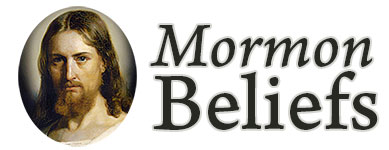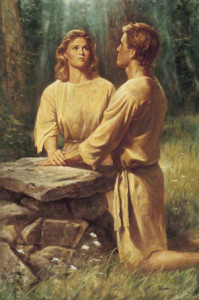 Mormons believe that priesthood was given to Adam in the Garden of Eden. God gave priesthood authority to Adam. Adam directed his children and performed ordinances to enable his children to gain eternal life. Adam was also the first prophet and the first to receive the keys to the presidency or the authority to administer God’s church here on earth. Adam also ordained some of his righteous children and descendants and taught them how to use proper priesthood authority. Subsequently, all of the prophets in each dispensation since Adam have held this authority. All prophets beginning with Adam have taught their followers of Jesus Christ to come.
Mormons believe that priesthood was given to Adam in the Garden of Eden. God gave priesthood authority to Adam. Adam directed his children and performed ordinances to enable his children to gain eternal life. Adam was also the first prophet and the first to receive the keys to the presidency or the authority to administer God’s church here on earth. Adam also ordained some of his righteous children and descendants and taught them how to use proper priesthood authority. Subsequently, all of the prophets in each dispensation since Adam have held this authority. All prophets beginning with Adam have taught their followers of Jesus Christ to come.
Mormons allocate time into seven earthly time periods, each period called a “dispensation.” A dispensation is a period of time during which a prophet dispenses gospel knowledge to all who will listen, teaches the truths of the kingdom of God, and performs such ordinances as God has entrusted to men during that time period. Many dispensations have been “restorations” of lost knowledge or authority, usually after the people have drifted into apostasy or spiritual laziness. The actual number of dispensations is unknown. Mormons acknowledge at least seven dispensations as taught by the Church.
Dispensations
The first dispensation is called that of Adam, or Adamic. It occurred shortly after Adam and Eve were ejected from the Garden of Eden. An angel of the Lord appeared to them and taught them the gospel (see Moses 5:6-9).
The church was first organized during the Adamic period. Adam was baptized in water by immersion, the same as members of the church are baptized today. (See Moses 6:64-65.) Adam baptized members of his family and gave the priesthood to his worthy and righteous sons.
One of the most crucial aspects of the gospel is free agency or free will. This entails the ability to choose. Many of Adam’s children chose to break God’s commandments. They chose to turn away from truth and righteousness and embraced carnal, sensual and devilish behavior. (See Moses 5:12-13.)
Adam and his righteous family members preached to the people to elicit their repentance. However, most did not repent of their wickedness and the righteous people united with Enoch and called themselves Zion. In the Scriptures, we see “Enoch and all his people walked with God…and it came to pass that Zion was not, for God received it up into his own bosom.” (See Moses 7:69.)
After the city of Enoch was taken up from the earth, the wicked comprised the greatest number of remaining people. Eventually, God became fed up with their iniquity and sent Noah to call the people to repentance, threatening to literally wipe them off the face of the earth.
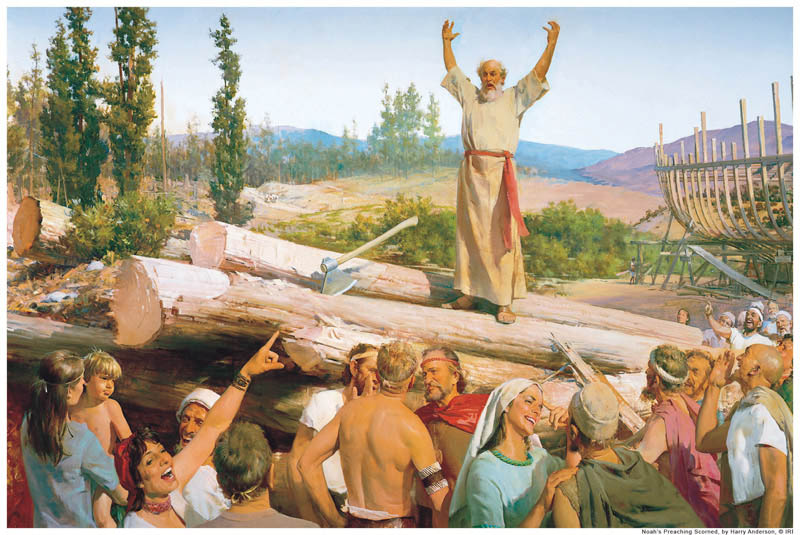 Most people thought Noah was a fool. Noah and his immediate family were the only righteous people left. Because they had been forewarned of the impending flood they were saved. (See Moses 8:19-20.)
Most people thought Noah was a fool. Noah and his immediate family were the only righteous people left. Because they had been forewarned of the impending flood they were saved. (See Moses 8:19-20.)
After the flood, Noah gave the priesthood to his righteous and worthy sons and grandsons. One of those men was a man named Melchizedek. Melchizedek was such a righteous person that the high priesthood was named after him. (See Doctrine and Covenants 107:2-4.) The priesthood was called the Melchizedek Priesthood to avoid unnecessarily repeating the Lord’s name. The formal name of the high priesthood is The Holy Priesthood after the Order of the Son of God.
Melchizedek ordained Abraham, who in turn ordained others, and the Melchizedek Priesthood continued in use (at least by the prophets) to the time of Moses. This division of time was called the Dispensations of Enoch and Abraham.
Abraham ordained his son Isaac. Isaac ordained his son Jacob. God later changed Jacob’s name to Israel. Jacob’s descendents became known as the Children of Israel. Moses of course, led the Children of Israel out of bondage from Egypt.
Mormon theology is quite clear as to who Melchizedek was, and his role in the priesthood. Other Christians are not so sure who he was. Speculation has risen to a remarkable extent. Some scholars (not Mormon) have even theorized that the “mysterious” priest must have been Christ himself.
We know from the scriptural record that Melchizedek was the King of Salem (Genesis 14: 18-20) who, on Abraham’s return with the booty taken from the four kings, “bringing forth bread and wine, for he was the priest of the most high God, blessed him,” and received from him “the tithes of all” (v. 20).
Josephus, an early churchman and historian, with many others, identifies Salem with Jerusalem, and adds that Melchizedek “supplied Abram’s army in a hospitable manner, and gave them provisions in abundance . . .and when Abram gave him the tenth part of his prey, he accepted the gift” (Ant., I, x, 2).
During this time God gave the Children of Israel the fullness of the gospel which they rejected, so the Lord gave them a lesser law called the Law of Moses. Most of these laws are in the biblical books of Exodus, Numbers, Leviticus and Deuteronomy. The 613 “schoolmaster” commandments were an alternative to the higher laws meant to create of Israel “a nation of priests.” The Children of Israel were not prepared to live the law in its fullness. The Lord in his wisdom gave them a lesser law to prepare them for a higher law at a later time.
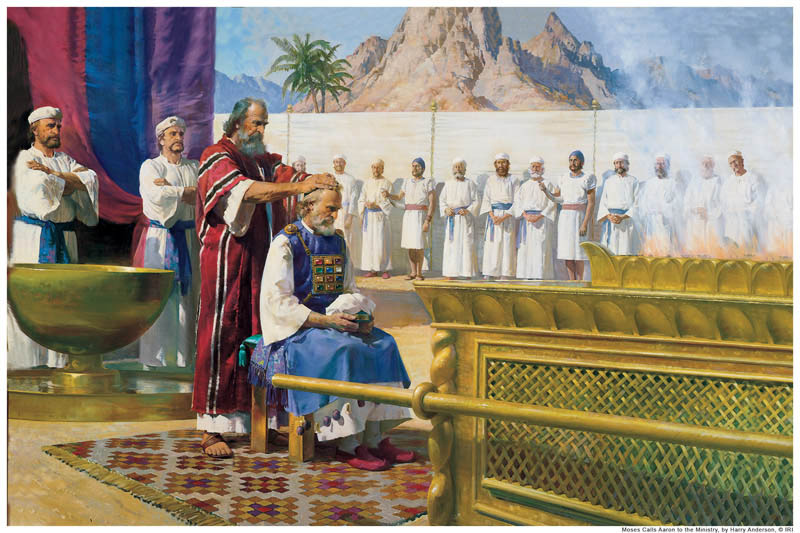 God also took the Melchizedek Priesthood away from the Children of Israel after the incident with the Golden Calf after Moses descended from the mountain; however it was not permanently withdrawn. The Ten Commandments were given as an alternative and simplification of the 613 commandments and are a more concrete and material law. They were administered by the power and authority of the Aaronic Priesthood.
God also took the Melchizedek Priesthood away from the Children of Israel after the incident with the Golden Calf after Moses descended from the mountain; however it was not permanently withdrawn. The Ten Commandments were given as an alternative and simplification of the 613 commandments and are a more concrete and material law. They were administered by the power and authority of the Aaronic Priesthood.
Aaron, was the brother of Moses, Aaron held the Levitical Priesthood, named after the priestly tribe of Levi. The Levitical priesthood has also been called the Aaronic Priesthood.
During the period between Moses and the coming of Christ, the prophets held the highter, Melchizedek Priesthood including Elijah, Isaiah, Jeremiah, Lehi (Book of Mormon prophet), Daniel and Ezekiel. This period of time is referred to as the Mosaic dispensation. (See Doctrine & Covenants 84:6.)
Christ brought with him a return of the fullness of the gospel. Christ held the full authority and keys of the Melchizedek priesthood and selected and ordained the apostles as recipients of that priesthood. (See Matthew 10:1-4.) He also called seventies. (See Luke 10:1.) During his lifetime, Christ organized the church and gave the apostles the power to ordain others to various offices in the priesthood. (See Acts 14:23.)
A Falling Away
This organization, as organized by Christ himself, mandated that the priesthood become the basis of authority for performing saving ordinances in Christ’s church. (See Matthew 16:19; Hebrews 5: 5-10, and Book of Mormon 3 Nephi 11:19-22; 3 Nephi 12:1). 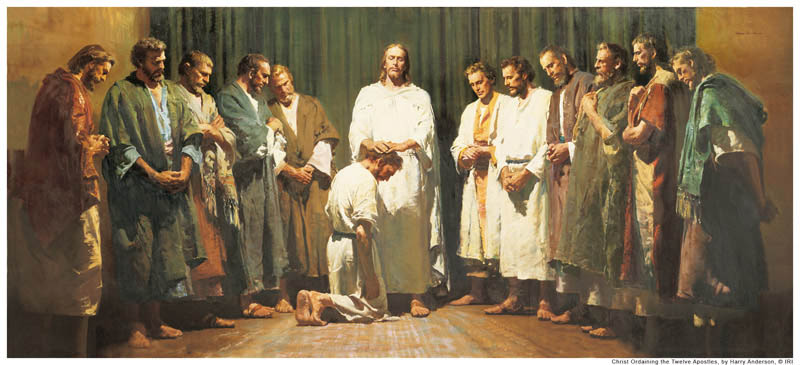 After Christ ascended to heaven, the church continued to teach the proper and true teachings of Christ and the church grew exponentially, but eventually proper and true teachings were modified or changed according to the dictates and precepts of men. Some leaders in the church decided not to obey the teachings or commandments, or to conduct ordinances in a way that was contrary to proper gospel teaching and procedure. More and more frequently, the gospel teachings were improperly taught and applied.
After Christ ascended to heaven, the church continued to teach the proper and true teachings of Christ and the church grew exponentially, but eventually proper and true teachings were modified or changed according to the dictates and precepts of men. Some leaders in the church decided not to obey the teachings or commandments, or to conduct ordinances in a way that was contrary to proper gospel teaching and procedure. More and more frequently, the gospel teachings were improperly taught and applied.
Men in positions of leadership sought to amend and revise the teachings and ordinances to suit their own way of thinking. Also many in the early church were persecuted or even killed, including priesthood holders, and finally the apostles were martyred. Notwithstanding, the church did continue but lacked actual authority and priesthood power and keys to lead God’s kingdom on earth. Churches that were organized during this time all lacked actual authority and also lacked the ability to perform the ordinances of salvation. Similarly, they lacked the authorized priesthood which prevented their ordinances from having a proper validity, effect and authority from God.
For many centuries there was no proper direction or authority of God. This period of time is referred to as an apostasy, or a falling away from the true church. Isaiah prophesized they “transgressed, changed the ordinances, [and broke] the everlasting covenant. (See Isaiah 24:5.)
Apostolic succession or proper authority is a key element in priesthood authority and church hierarchy for both Catholics and Mormons.
If the Catholics have an unbroken line of apostolic succession, and an apostasy did not occur, it follows that the Mormons are clearly wrong. On the other hand, if there was an apostasy and the line of apostolic succession was breached, then Catholics are clearly wrong.
Catholics assert that there was never an Apostasy. The Mormon perspective is that the priesthood was lost shortly after the death of the apostles and that the priesthood was lost during this falling away.
Restoration of the Power and Authority of the Holy Priesthood
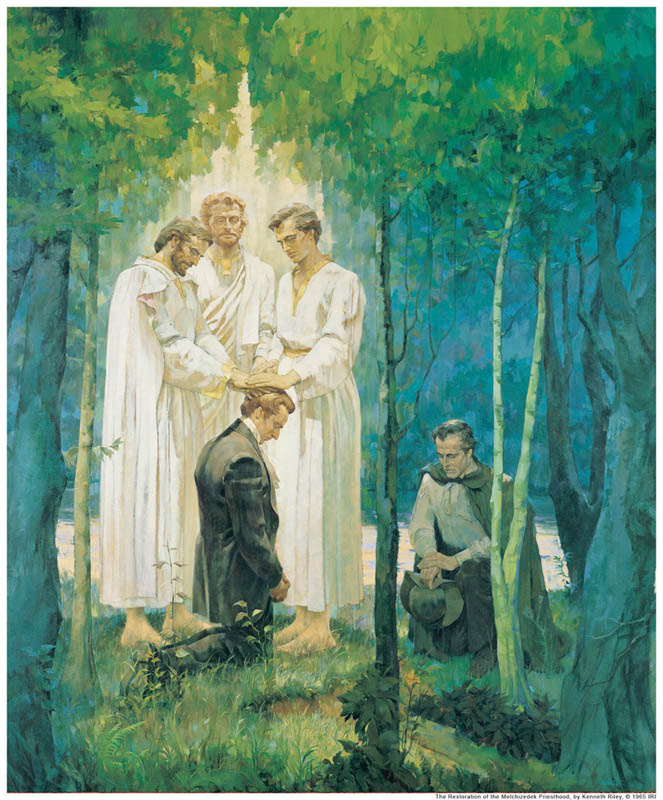 A reformation, as claimed by the Protestants, could not restore the true priesthood or its authority. A complete restoration of priesthood authority was necessary, not a reformation. Mormons believe that the reformation was a prepatory step in God’s time table to restore his church and priesthood authority in later times. Consequently, Mormons also believe that Luther and other Fathers of the Reformation were inspired, and that Luther’s translation of the Bible was also inspired.
A reformation, as claimed by the Protestants, could not restore the true priesthood or its authority. A complete restoration of priesthood authority was necessary, not a reformation. Mormons believe that the reformation was a prepatory step in God’s time table to restore his church and priesthood authority in later times. Consequently, Mormons also believe that Luther and other Fathers of the Reformation were inspired, and that Luther’s translation of the Bible was also inspired.
One key point with regard to priesthood authority that distinguishes protestant priesthood from Mormon or Catholic priesthood is a de-emphasis of church hierarchy under the principal of the “universal priesthood of believers,” which claims the authority of the priesthood was originally derived from the people.
This is in keeping with the beliefs of Luther, who after his excommunication from the Catholic Church, rejected the priesthood as unnecessary and claimed that the “baptism itself was a holy priesthood.” Luther’s lead was also followed by other Fathers of the Reformation and continues to this day.
In Mormonism, the Church of Jesus Christ, priesthood authority is based on personal worthiness throughout one’s life. If the person fails to abide gospel principals, even if he is ordained, the Spirit ceases to strive with him, and his priesthood is null and void. The Savior tells us through modern revelation; as per Mormon canon,
No power or influence can or ought to be maintained by virtue of the priesthood, only by persuasion, by long-suffering, by gentleness and meekness, and by love unfeigned (Doctrine & Covenants 121:41).
Women do not hold the priesthood in the Church of Jesus Christ; rather they enjoy the priesthood blessings through their husbands. Men and women are considered equals before God. Both have the obligation to teach their offspring gospel principles and preside over their families as co-partners.
On May 15th, 1829, the Prophet Joseph Smith and Oliver Cowdery received the Aaronic Priesthood. This gave them the proper authority to baptize. They were given this authority by the resurrected John the Baptist. John the Baptist’s method of ordaining Joseph Smith and Oliver Cowdery to the Aaronic Priesthood was as follows.
First, he conferred the Aaronic priesthood upon them, followed by their baptizing each other. He then instructed them to lay hands on each other and confer the priesthood that the angel had recently bestowed. Smith and Cowdery gave a simple explanation when asked about what had happened, they said “for so we were commanded.”
The messenger who visited us on this occasion and conferred this Priesthood upon us, said that his name was John, the same that is called John the Baptist in the New Testament and that he acted under the direction of Peter, James and John, who held the keys of the Priesthood of Melchizedek, which Priesthood, he said, would in due time be conferred on us (Joseph Smith—History 1:68–72; emphasis in JS—H 1:70, 72 added).
Because there was no mortal person one on earth with this authority, it was necessary for the resurrected Angel of the Lord, John the Baptist, to bestow the priesthood. It was he who held the keys of the Aaronic Priesthood in the Dispensation of the Meridian of Time. Christ also acknowledged John’s priesthood by coming to him for this saving ordinance and to set a proper example of going to an authorized servant of the Lord.
The Melchizedek Priesthood was restored next, bringing to earth all the power and authority necessary to organize and direct the Church of Jesus Christ and to perform additional saving priesthood ordinances.
Smith and Cowdery did not record the actual date that they received the Melchizedek Priesthood, but historical records and testimony of witnesses place the ordination within the 13-day period of 16th to 28th of May, 1829.
The Melchizedek Priesthood was conferred upon them by Christ’s Apostles Peter, James and John, Peter and James as resurrected beings, and John as a translated being.
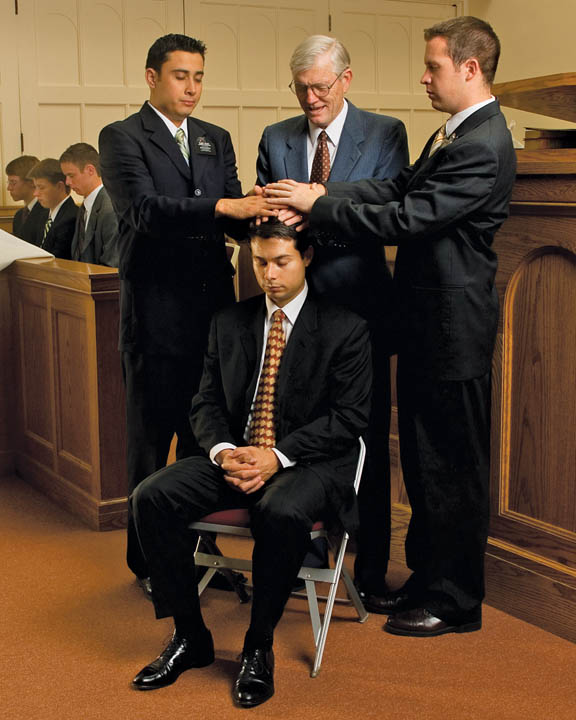 With the restored priesthoods—the Prophet Joseph Smith and Oliver Cowdery— organized the Church of Jesus Christ with proper authority. This occurred on April 6th 1830. The restoration of priesthood authority was necessary to re-establish God’s kingdom on earth in preparation for the Second Coming of Jesus Christ and ushering in of His millennial reign. This is called “the last dispensation of time,” also “the fullness of times,” since all things pertaining to the kingdom of God on earth must be gathered in, fulfilled.
With the restored priesthoods—the Prophet Joseph Smith and Oliver Cowdery— organized the Church of Jesus Christ with proper authority. This occurred on April 6th 1830. The restoration of priesthood authority was necessary to re-establish God’s kingdom on earth in preparation for the Second Coming of Jesus Christ and ushering in of His millennial reign. This is called “the last dispensation of time,” also “the fullness of times,” since all things pertaining to the kingdom of God on earth must be gathered in, fulfilled.
For Mormons, authority is a key element of the gospel. Apostolic succession is a requisite, and this authority is not derived from the people, but rather from the Lord himself and his authorized servants.
All Mormon men who have priesthood have what Mormons call “a line of authority.” This line traces their priesthood authority, usually to Joseph Smith or Oliver Cowdery, who in turn trace their line of authority to John the Baptist in the Aaronic priesthood, and Peter, James and John, in the Melchizedek Priesthood, who were Apostles of the Lord.
Mormon priesthood holders have a personal line of authority. If not, the priesthood holder many ask church authorities, and it will be given to them. The Mormon Church tracks the ordinations in both the Aaronic and Melchizedek Priesthoods.
Additional information of the individual lines of authority of John the Baptist, Peter, James and John are found in the Doctrine & Covenants.
The priesthood has been fully restored for the blessing of God’s children and the building up of His kingdom on earth. It is a manifestation of His great love for us and the proof that the heavens are open, that God calls prophets and lends a portion of His power to His children whenever it is possible and His children will receive of Him.
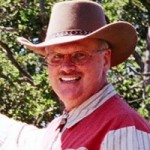 Mel Borup Chandler is a member of The Church of Jesus Christ of Latter-day Saints (“Mormon”). He currently works in real estate investment and property management with his wife Sandra.
Mel Borup Chandler is a member of The Church of Jesus Christ of Latter-day Saints (“Mormon”). He currently works in real estate investment and property management with his wife Sandra.
